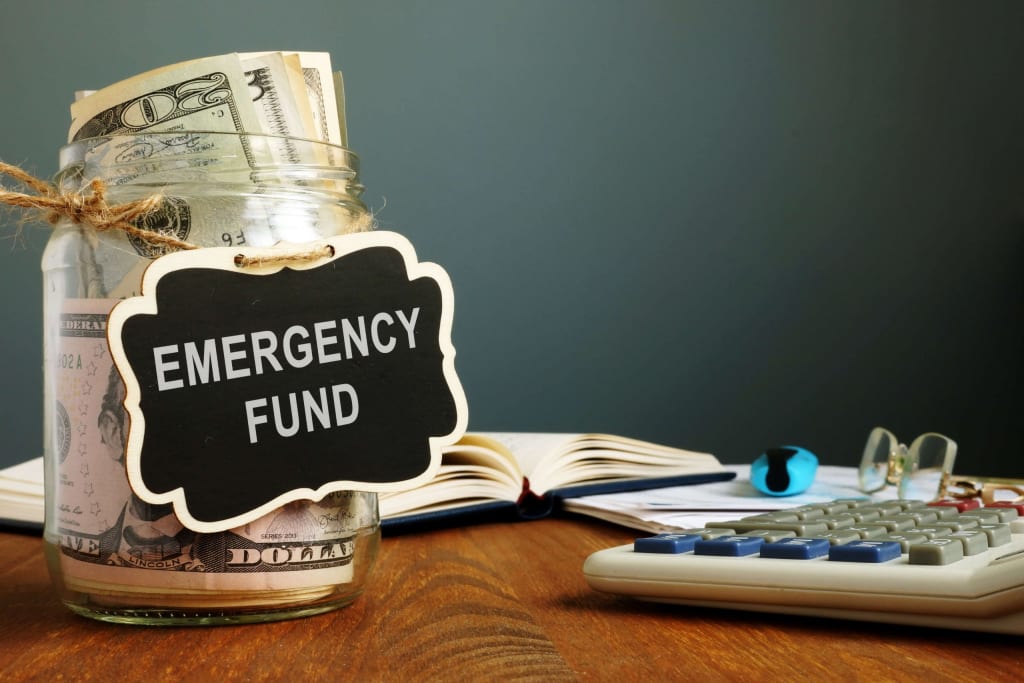Building an Emergency Fund: Financial Safety Net for Uncertain Times
Emergency Fund

Introduction
Life is full of unexpected events, such as job loss, medical emergencies, or major home repairs, which can put a strain on your finances. Building an emergency fund is crucial to protect yourself from these unforeseen circumstances and provide a financial safety net. An emergency fund offers peace of mind, stability, and the ability to navigate through uncertain times without resorting to high-interest debt. In this article, we will discuss the importance of an emergency fund, steps to build one, and strategies to maximize its effectiveness.
1. The Importance of an Emergency Fund
a. Financial Security: An emergency fund provides a buffer against unexpected expenses, ensuring that you can cover immediate needs without relying on credit cards, loans, or depleting your long-term savings.
b. Peace of Mind: Knowing that you have a financial safety net in place reduces stress and anxiety during times of crisis. It allows you to focus on addressing the situation rather than worrying about the financial consequences.
c. Avoiding Debt: Without an emergency fund, you may be forced to rely on high-interest debt to cover unexpected expenses. Having cash readily available allows you to avoid accumulating debt and its associated interest payments.
d. Flexibility and Choices: An emergency fund provides you with the freedom to make choices that align with your long-term financial goals. It offers the flexibility to seize opportunities or make necessary life changes without being financially constrained.
2. Determining the Ideal Emergency Fund Size
a. Calculate Your Monthly Expenses: Determine your average monthly expenses, including essential items such as housing, utilities, groceries, transportation, insurance, and debt payments.
b. Assess Your Risk Factors: Consider factors such as job stability, health conditions, and the number of dependents. Those with higher risk factors may need a larger emergency fund.
c. Aim for 3-6 Months' Worth of Expenses: As a general guideline, strive to save three to six months' worth of living expenses. This amount provides a solid cushion to navigate through most unforeseen events.
d. Adjust Based on Personal Circumstances: Individual circumstances vary, and some may require a larger emergency fund. Factors such as income volatility, specific industry risks, or unique family situations should be considered when determining the ideal fund size.
3. Steps to Build an Emergency Fund
a. Start Small: Begin by setting achievable savings goals. Even small amounts saved regularly can add up over time. Commit to a specific monthly or bi-weekly contribution that you can comfortably manage.
b. Automate Savings: Make saving for emergencies a priority by automating regular contributions to your emergency fund. Set up an automatic transfer from your checking account to a separate savings account dedicated solely to your emergency fund.
c. Reduce Expenses and Save the Difference: Look for opportunities to cut back on non-essential expenses. Redirect the money saved towards your emergency fund. Consider downsizing, eliminating subscriptions, or reducing discretionary spending.
d. Generate Extra Income: Explore additional income streams to accelerate your emergency fund growth. Take on a part-time job, freelance, or monetize a hobby or skill. Direct the extra income earned towards your fund.
e. Windfalls and Bonuses: Utilize unexpected windfalls, tax refunds, or work bonuses to boost your emergency fund. Instead of splurging, allocate a portion or the entire amount towards your financial safety net.
4. Strategies to Maximize the Effectiveness of Your Emergency Fund
a. Keep It Liquid: Ensure your emergency fund is readily accessible. Consider using a high-yield savings account or a money market account that offers a competitive interest rate while allowing easy and quick access to your funds.
b. Separate Accounts: Keep your emergency fund in a separate account from your daily checking account. This separation helps prevent impulsive spending and provides a clear distinction between emergency savings and regular expenses.
c. Preserve the Fund's Purpose: Reserve your emergency fund for genuine emergencies. Resist the temptation to dip into it for non-essential purchases or discretionary spending. Maintain discipline and prioritize its intended purpose.
d. Periodic Review and Replenishment: Regularly reassess your emergency fund's adequacy, especially after utilizing it for unforeseen expenses. If funds are withdrawn, aim to replenish the fund as quickly as possible to maintain its effectiveness.
5. Evolving Your Emergency Fund as Your Financial Situation Improves
a. Adjust the Fund Size: As your income, expenses, and overall financial situation change, reassess your emergency fund size. A higher income or increased responsibilities may warrant a larger fund to provide a greater sense of security.
b. Assess Insurance Coverage: Review your insurance policies, including health, disability, and homeowners or renters insurance. Adequate coverage reduces the potential impact of unexpected events on your emergency fund.
c. Long-Term Savings and Investments: Once your emergency fund is well-established, consider diversifying your savings and investing for long-term goals. Consult with a financial advisor to develop a comprehensive plan that balances emergency savings with other financial priorities.
Conclusion
Building an emergency fund is a crucial step towards achieving financial stability and peace of mind. By determining the appropriate fund size, committing to regular contributions, automating savings, and exercising financial discipline, you can create a robust financial safety net. An emergency fund provides the flexibility to handle unexpected events without resorting to high-interest debt or compromising long-term financial goals. As you progress on your financial journey, continue to review and adjust your emergency fund to align with changing circumstances. Remember, the peace of mind and financial security that an emergency fund provides is an invaluable asset in navigating uncertain times.
About the Creator
Enjoyed the story? Support the Creator.
Subscribe for free to receive all their stories in your feed. You could also pledge your support or give them a one-off tip, letting them know you appreciate their work.





Comments
There are no comments for this story
Be the first to respond and start the conversation.